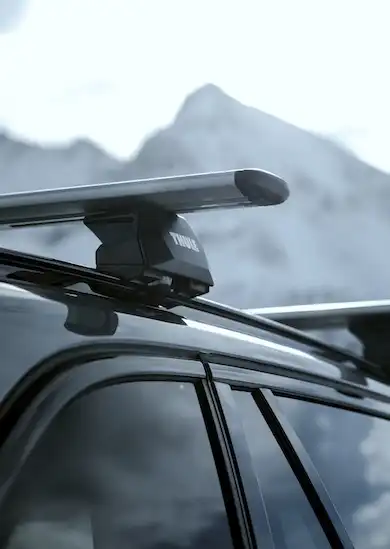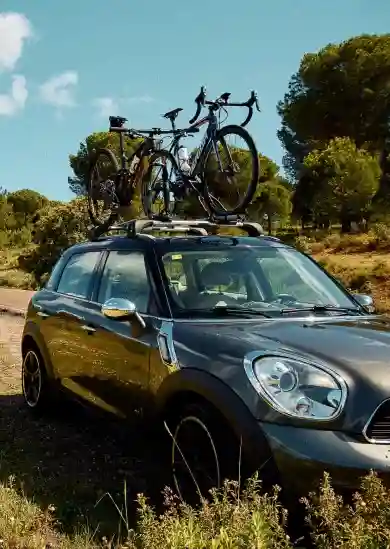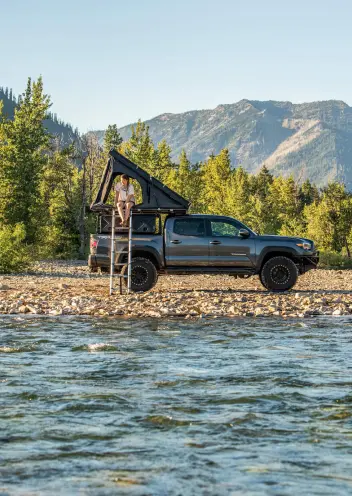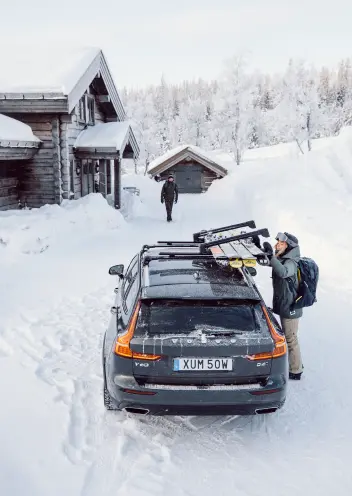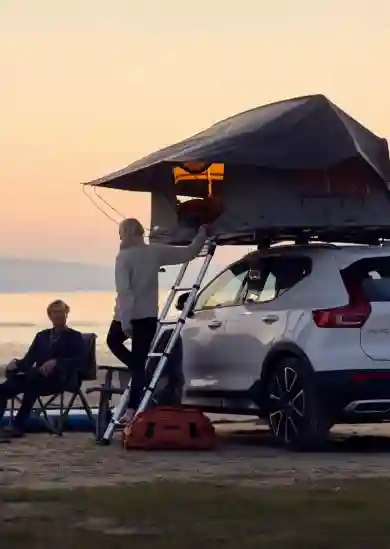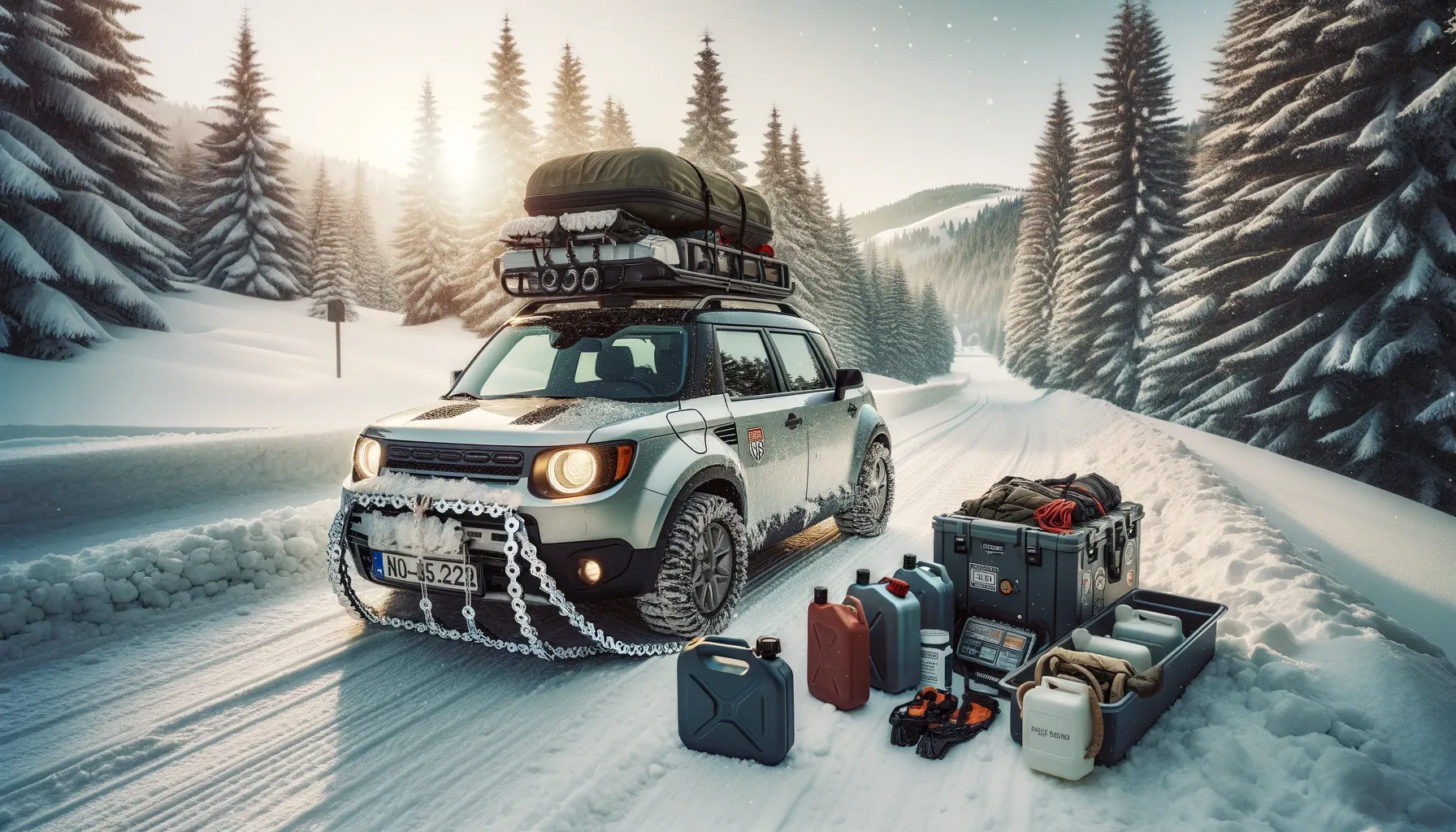January 31, 2020
Rack Attack Team
Last week a local ski hill here in BC, Canada was hit by a blizzard, dozens of skiers and snowboarders returning to the city down the steep mountain road ended up stranded.
Caused by a multiple car pile-up blocking the main road for several hours, all the skiers still above the blockage were stuck at the lodge overnight. Luckily, the ski resort had plenty of food and beverages, not to mention sleeping pads, to comfort its unexpected guests for the night.
But what if the resort hadn't been there? What happens if your vehicle spins out along a desolate stretch of highway coming back from a family road trip? You can have the best Finnish designed snow tires and German all-wheel drive engineering and still ended up stranded in a snowbank. And if you're in a dead zone for cell service on a snowy secondary road, it might take a while to summon a tow truck. If you know you'll be driving a deserted road during winter conditions, text or otherwise inform someone of your whereabouts while you have cell service.
That's where having a winter survival kit comes in handy. If you're already regularly driving in winter weather, you'll have a snow brush/scraper, a squirt bottle of lock de-icer and maybe even a pair of battery jumper cables. Even if you drive a small hatchback, it's still worth filling a Rubbermaid tub full of emergency items. Like wilderness first aid kits, winter emergency kits can be bought pre-assembled at department stores. For a true sense of security, nothing beats putting together your very own items; adding or taking away as you see fit.
Battery Power
It says something about the world we live in but perhaps the most important item might be your cell phone car charger and adaptor. Though cell service is spotty in the backcountry, the first thing you do if you slide off the road will be to call either your Roadside Assistance provider or even 9-1-1. Many experienced winter campers now carry Garmin Mini or SPOT satellite receiver systems which continue to get cheaper and more sophisticated every year. Having a phone simply means you'll have a lifeline to the outside world, though use it sparingly to save battery life. Should a mishap befall you once darkness falls, you won't be able to accurately assess your situation if you don't have a flashlight or headlamp, so make sure those are packed with extra cold-proof alkaline batteries. If you're looking for an extra degree of protection, consider a manual ‘wind up' flashlight that doesn't require batteries to work.
For warmth/comfort
Pack extra clothes such as snow pants, a wool shirt, and an insulated vest. Gloves or mitts (warmer), hand and footwarmer packets, and small, thick plastic bags which can be worn as a vapour barrier between socks and boots. Stay away from cotton, choose synthetics or wool. Beanies and neck tubes don't take up much space and trap body heat effectively. Foil emergency space blankets if space in your vehicle is confined, or a heavy wool blanket. Winter boots, if space allows. Some tried and tested hacks include burning a stubby candle inside a tall, open can. Candles are remarkably efficient in heating up confined spaces and will save battery power and fuel from constantly turning your car's engine on and off. Make sure that you crack your window to allow potentially deadly carbon monoxide to escape.
Need more space for everything you want to bring on your trip? The easiest way to increase the storage space of your vehicle is by fitting your vehicle with a roof top cargo box. Learn all about the best vehicle storage solutions with our Cargo Box Buyers Guide.
Tools
Before vehicle functionality was taken over by computer codes and black boxes, you could fix a lot of mechanical issues with a flathead screwdriver, a set of vice grips and an adjustable wrench. These three tools are still remarkably handy when it comes to removing and replacing non-functioning parts. At the very least, you should carry a Swiss Army style knife, a multi-tool, and perhaps a small socket set. Of course this should be in addition to everything you need to swap out a flat tire.
Food & Fuel
Pack energy bars, gel shots, dextrose tablets and a couple of filled plastic water bottles. If you have a truck or SUV with more storage space, it's nice to have a small butane camp stove with extra fuel canister, nesting pots and dehydrated food packets, plastic cups and cutlery.
Getting unstuck
If your trip takes you onto ploughed Forest Service or other dirt roads, take tire chains and know how to fit them before you leave; the backcountry is no place to learn how to install chains. A sturdy shovel, bag of sand or a bag of kitty litter might assist in digging your vehicle out and back onto the roadbed. Most backcountry winter travelers will have a set of towing hooks. Road flares might seem like overkill until that time your vehicle skids out and leaves half its body sticking out in the slow lane on a blind curve. You're going to need to know how to activate the flares, placing them approximately three metres apart in the front and back of the car.
First aid kit/extra prescription or painkiller medication
The worst case scenario, of course, could involve a collision with an animal or another vehicle. Ideally, everyone traveling in your vehicle would have First Aid training and be able to respond calmly and professionally in a crisis, but that's not likely the case. Carrying an easy to access first aid kit (and acquiring the knowledge to use it) should be part of your winter emergency kit as well. As the Boy Scouts say, “Be Prepared.”
Accidents, breakdowns, and unpredicted events never happen when it's convenient. Being prepared won't stop these situations from happening, but they will downgrade them from something so grave it's potentially life threatening to no more than an inconvenience. Keep your vehicle stocked and ready for whatever the road throws at you, and you'll keep you and your family safe wherever the road takes you.
